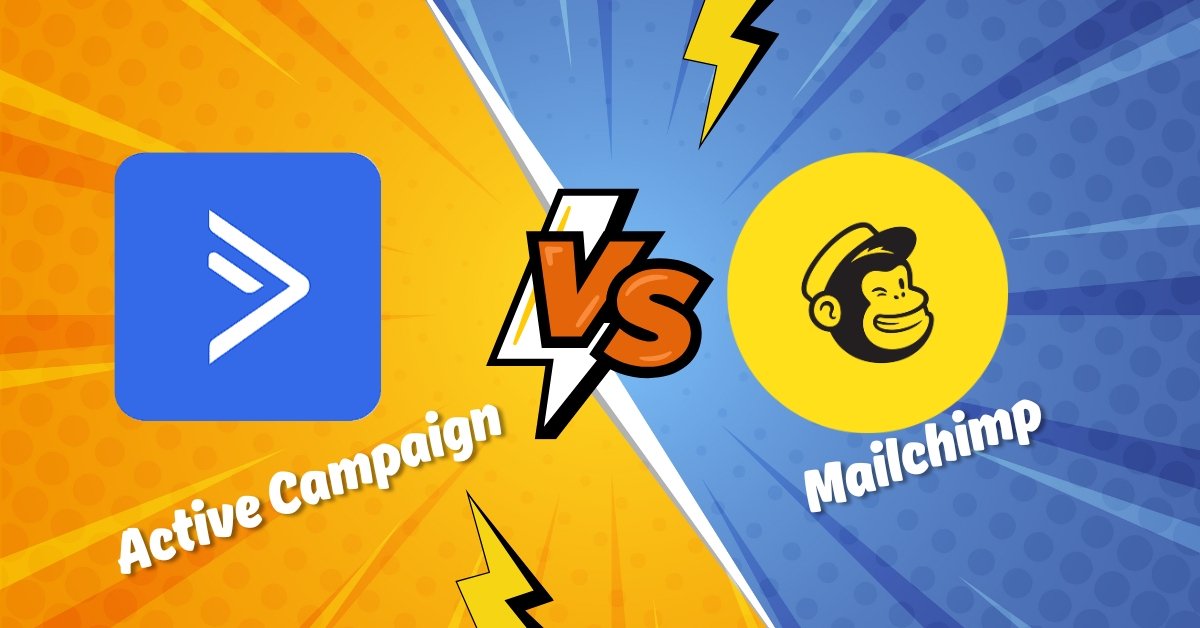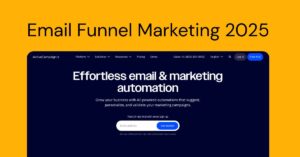Introduction
When it comes to email marketing, choosing the right platform is crucial for the success of your campaigns. In this ActiveCampaign vs Mailchimp comparison, we’ll break down the key features, pricing, automation capabilities, and more to help you decide which platform is best suited for your business. Whether you’re just starting out or looking to scale your marketing efforts, this guide will provide you with the insights you need to make an informed decision.
Table of Contents
Ease of Use
When it comes to ease of use, both ActiveCampaign and Mailchimp offer user-friendly interfaces—but there are some key differences to consider.
Mailchimp is known for its simple drag-and-drop email builder and intuitive dashboard. It’s especially beginner-friendly, making it a great choice for small businesses or individuals who are new to email marketing. The onboarding process is straightforward, and most users can create and send their first campaign within minutes.
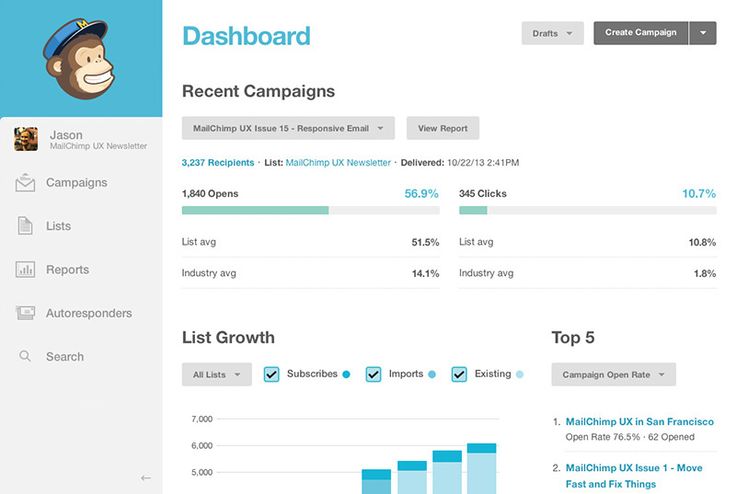
ActiveCampaign, on the other hand, has a slightly steeper learning curve due to its advanced features. While the interface is clean and well-organized, it caters more to experienced marketers who need powerful automation tools and CRM functionality. However, once you’re familiar with the platform, it becomes incredibly efficient and scalable.
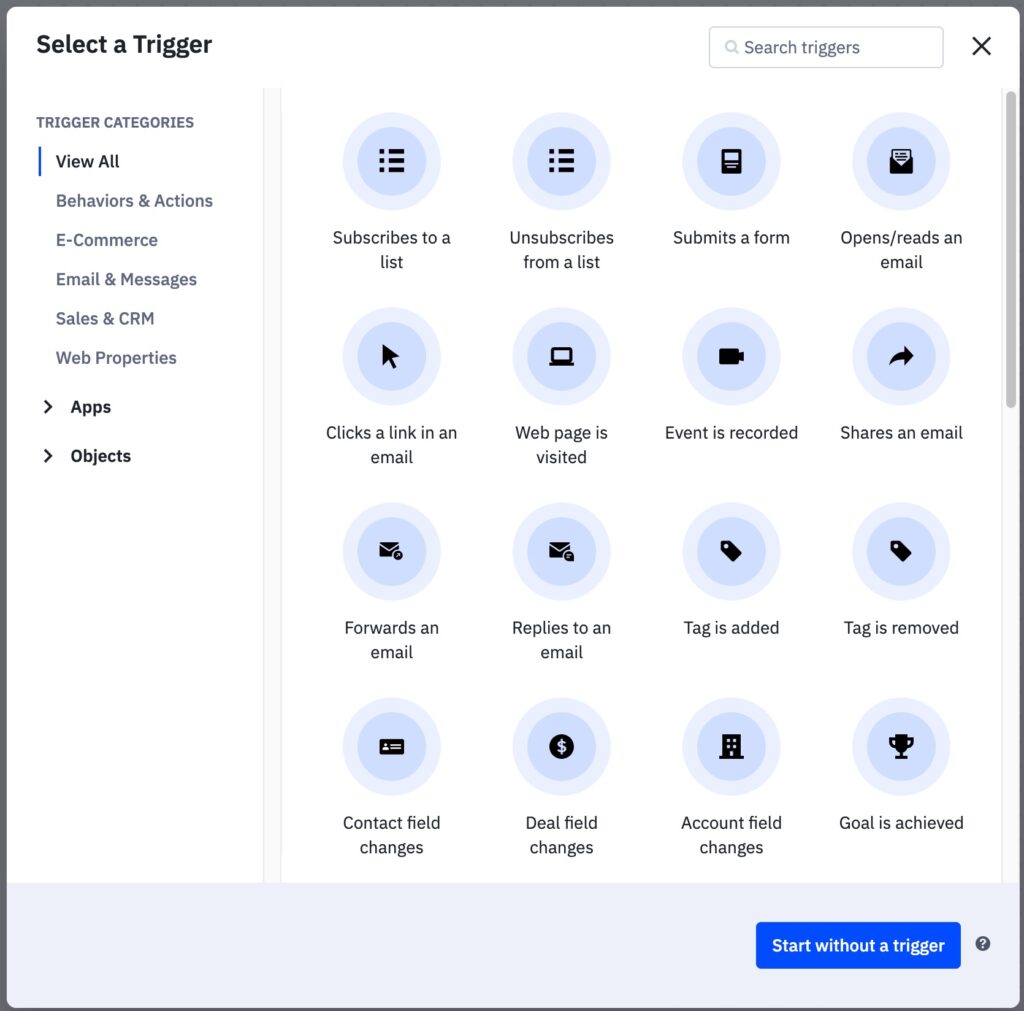
Key Differences:
- Mailchimp is easier to get started with for beginners.
- ActiveCampaign offers more depth and customization, which can be overwhelming at first.
- Mailchimp’s UI focuses on simplicity; ActiveCampaign focuses on capability.
Email Marketing Features
When comparing ActiveCampaign vs Mailchimp, one of the most important aspects to consider is their email marketing features. Both platforms offer a range of tools to help you create effective email campaigns, but they differ in their offerings and capabilities.
Mailchimp Features:
Mailchimp is widely known for its easy-to-use email marketing tools. Some of the core features include:
- Email Templates: Mailchimp provides a large selection of pre-designed templates, making it simple for beginners to create professional-looking emails.
- Drag-and-Drop Editor: With its drag-and-drop editor, you can customize templates and design campaigns without any coding skills.
- List Segmentation: Mailchimp allows basic list segmentation, helping you target specific groups based on behaviors or attributes, such as location or purchase history.
- A/B Testing: You can test subject lines, email content, and sending times to optimize your campaigns for better results.
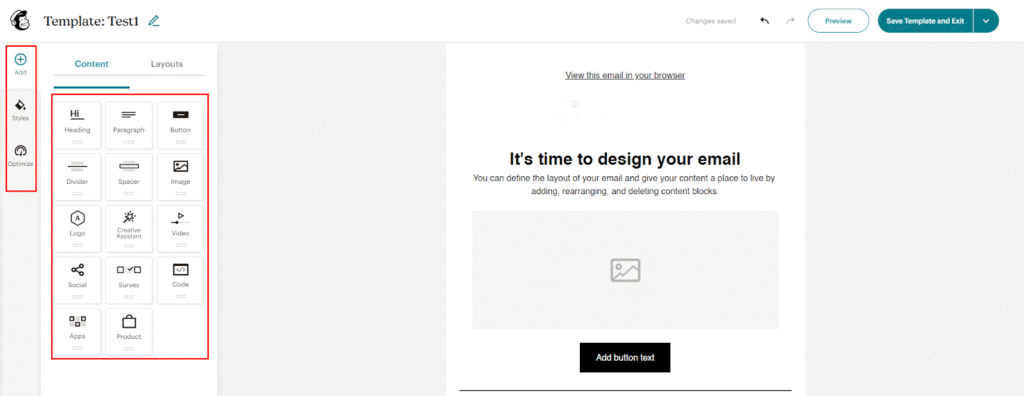
ActiveCampaign Features:
ActiveCampaign excels in advanced email marketing features that cater to more experienced marketers. Some standout features include:
- Advanced Automation: ActiveCampaign’s automation tools are more sophisticated than Mailchimp’s, allowing for complex workflows that trigger emails based on specific user actions, like website visits or form submissions.
- Personalization: ActiveCampaign offers robust personalization options, enabling you to dynamically change content based on recipient data, such as their name, location, or past interactions.
- Conditional Content: This feature lets you display different content to different segments of your audience, improving engagement by tailoring emails to the right people.
- Dynamic Email Content: ActiveCampaign can dynamically insert content like product recommendations based on customer behavior.
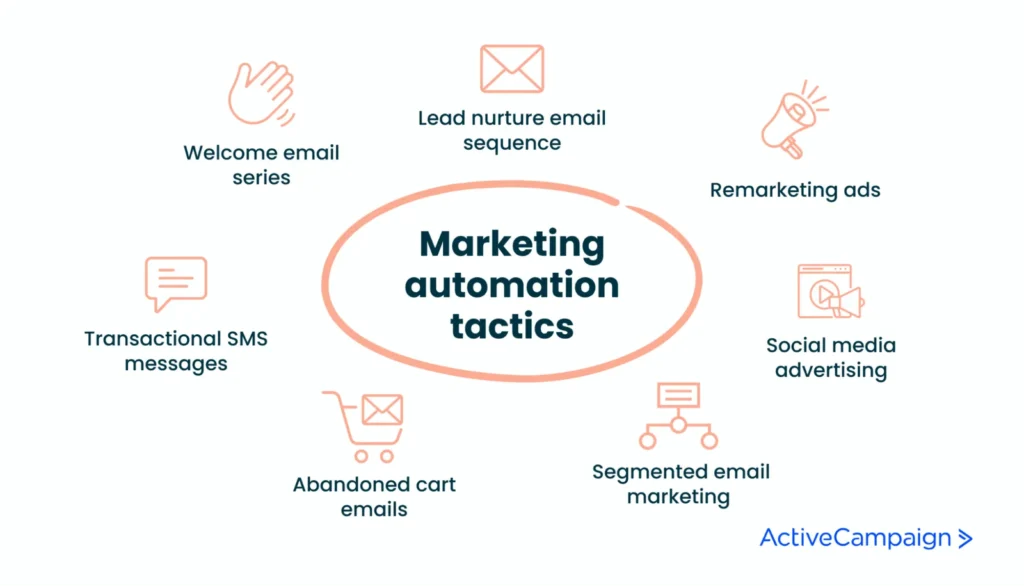
Key Differences:
ActiveCampaign is perfect for users who need advanced segmentation, automation, and personalized content to increase engagement and drive sales.
Mailchimp is ideal for simple campaigns, especially for beginners who need easy-to-use tools like templates and a drag-and-drop editor.
Automation Capabilities
When comparing ActiveCampaign vs Mailchimp, automation capabilities are one of the most crucial factors to consider, especially for businesses that need to streamline their marketing processes. Both platforms offer automation features, but they differ in complexity and depth.
Mailchimp Automation Features:
Mailchimp offers a set of automation tools that are simple and easy to use, ideal for beginners or small businesses that need basic automation:
- Welcome Emails: You can set up automated welcome emails that trigger when a new user subscribes to your list.
- Abandoned Cart Emails: Mailchimp provides basic automation for abandoned cart reminders, which is especially useful for eCommerce businesses.
- Simple Triggers: You can create email sequences based on basic triggers, such as a user signing up for a newsletter or making a purchase.
- Email Series: Mailchimp allows you to set up automated email series for onboarding or lead nurturing, but these are relatively simple compared to more advanced platforms.

ActiveCampaign Automation Features:
ActiveCampaign is known for its advanced automation capabilities. It is a more powerful tool for users who need complex workflows and in-depth customization:
- Multi-Step Workflows: ActiveCampaign allows you to create multi-step automation workflows that can include various triggers, actions, and conditions (e.g., if a user clicks on a certain link, they can be sent a different email series).
- Behavioral Tracking: You can track user behavior (such as website visits, email opens, or clicks) and use that data to trigger personalized email sequences or actions.
- Conditional Logic: ActiveCampaign provides powerful conditional logic, meaning you can tailor workflows based on how users interact with your emails and website.
- Advanced Automation Templates: ActiveCampaign offers pre-built automation templates that cater to different needs such as lead nurturing, sales follow-ups, or customer retention.
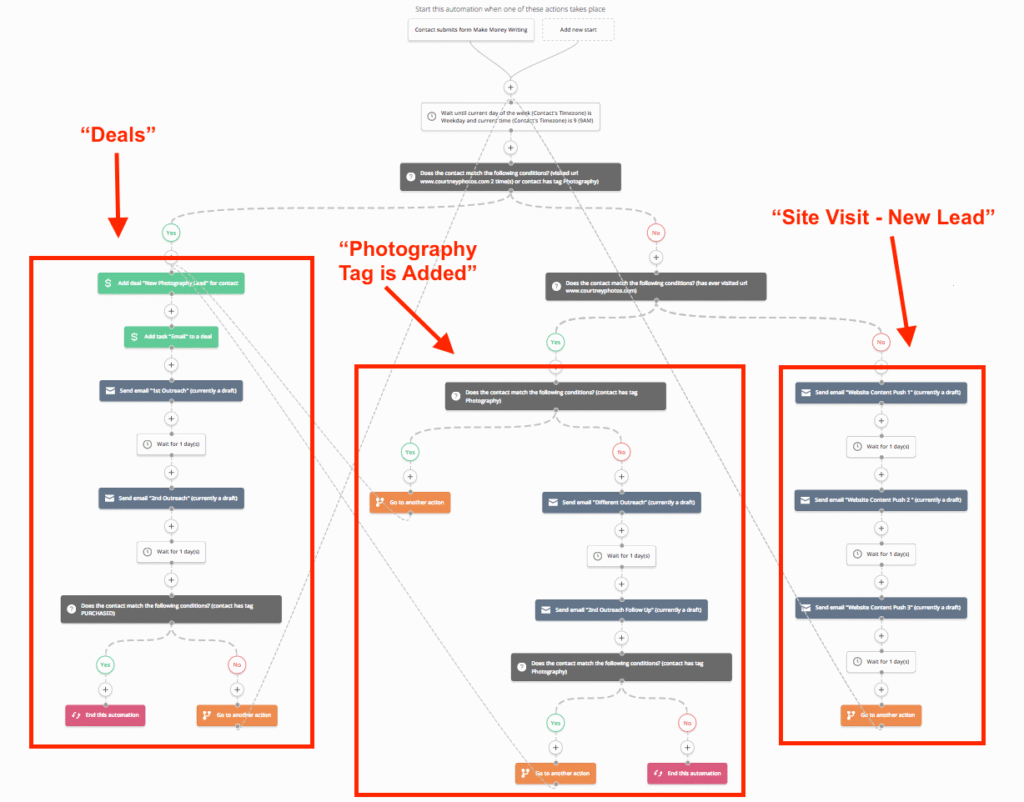
Key Differences:
- Mailchimp offers basic automation that’s great for beginners or those with simple needs.
- ActiveCampaign stands out with its advanced automation, offering in-depth workflows, behavioral triggers, and conditional logic for more personalized campaigns.
CRM and Contact Management
When comparing ActiveCampaign vs Mailchimp, CRM and contact management capabilities are essential for businesses that want to track leads, manage relationships, and deliver personalized communication. Both platforms provide tools to manage contacts, but they differ significantly in features and depth.
Mailchimp CRM and Contact Management:
Mailchimp offers basic contact management features that are sufficient for smaller businesses or those just starting with email marketing:
- Audience Segmentation: You can segment your audience based on data such as location, engagement, or purchase history. However, the segmentation options are fairly limited compared to more robust platforms.
- Tags and Groups: Mailchimp allows you to organize your contacts using tags and groups, which makes it easier to target specific segments for campaigns.
- Basic Customer Profiles: While Mailchimp provides customer profile information, it’s relatively basic and doesn’t offer the depth needed for detailed relationship management.
ActiveCampaign CRM and Contact Management:
ActiveCampaign, on the other hand, provides a full-fledged CRM system designed for deeper relationship management and advanced segmentation:
- CRM Functionality: ActiveCampaign includes a built-in CRM that helps you track interactions with leads and customers. You can create detailed profiles, track communication history, and view lead scores to prioritize follow-ups.
- Advanced Segmentation: With ActiveCampaign, you can segment contacts based on a wide range of factors such as behavior, purchase history, and engagement. This allows for more granular targeting.
- Custom Fields & Tags: ActiveCampaign offers custom fields that allow you to track specific information about your contacts (e.g., interests, business size, etc.), giving you a deeper understanding of your audience.
- Lead Scoring: ActiveCampaign includes lead scoring, which assigns a score to contacts based on their actions and engagement, helping you identify hot leads that are ready to convert.
Key Differences:
- Mailchimp provides basic CRM and contact management tools, making it suitable for small businesses or beginners who don’t need advanced tracking or lead management.
- ActiveCampaign offers a powerful CRM system with detailed contact profiles, lead scoring, and advanced segmentation, making it ideal for businesses that need to manage complex customer relationships and sales pipelines.
Integrations
When comparing ActiveCampaign vs Mailchimp, integrations play a vital role in how well these platforms work with other tools you already use, such as CRMs, eCommerce platforms, and social media. Both platforms offer a variety of integrations, but they differ in terms of breadth and ease of use.
Mailchimp Integrations:
Mailchimp offers a solid selection of integrations that cover most business needs, making it a versatile choice for small businesses:
- E-commerce Integrations: Mailchimp integrates seamlessly with platforms like Shopify, WooCommerce, and BigCommerce, allowing you to track customer behavior and send targeted campaigns based on past purchases.
- Social Media Integrations: You can easily integrate Mailchimp with Facebook, Instagram, and Twitter, enabling you to run ads directly from the platform and retarget audiences.
- CRM Integrations: Mailchimp integrates with popular CRM tools like Salesforce and HubSpot, allowing for smoother data sync between your marketing and sales teams.
- Zapier Integration: Mailchimp supports integration with thousands of apps via Zapier, which allows you to automate workflows and connect with apps that may not have a native integration.
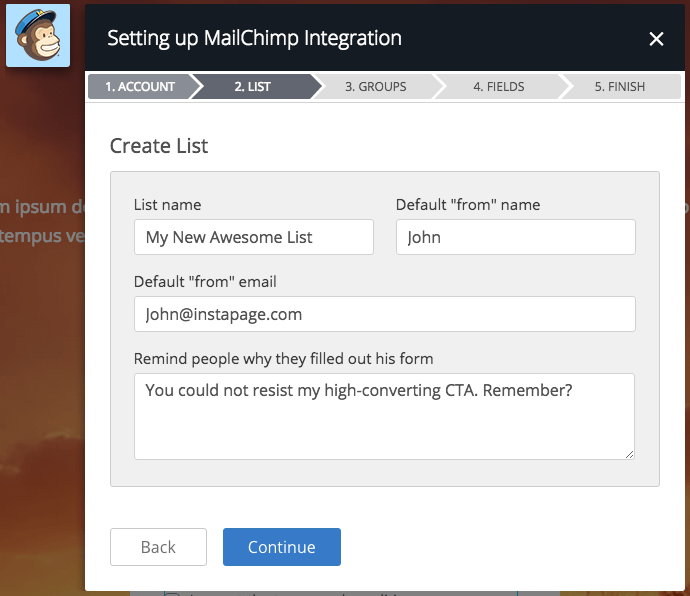
ActiveCampaign Integrations:
ActiveCampaign takes integrations to the next level, offering a broader range of integrations and more advanced options:
- E-commerce Integrations: ActiveCampaign supports deeper integrations with platforms like Shopify, WooCommerce, and Magento. You can sync customer data and automate personalized messages based on purchase behavior.
- CRM and Sales Integrations: ActiveCampaign integrates with more advanced CRM tools such as Salesforce and Pipedrive. You can seamlessly sync lead data to optimize sales pipelines and improve lead nurturing.
- Webinar and Event Integrations: For event-driven businesses, ActiveCampaign integrates with tools like Zoom and GoToWebinar, making it easier to automate event follow-ups and confirmations.
- Custom API: For more complex needs, ActiveCampaign provides a custom API for businesses that want to build unique integrations or connect with proprietary systems.
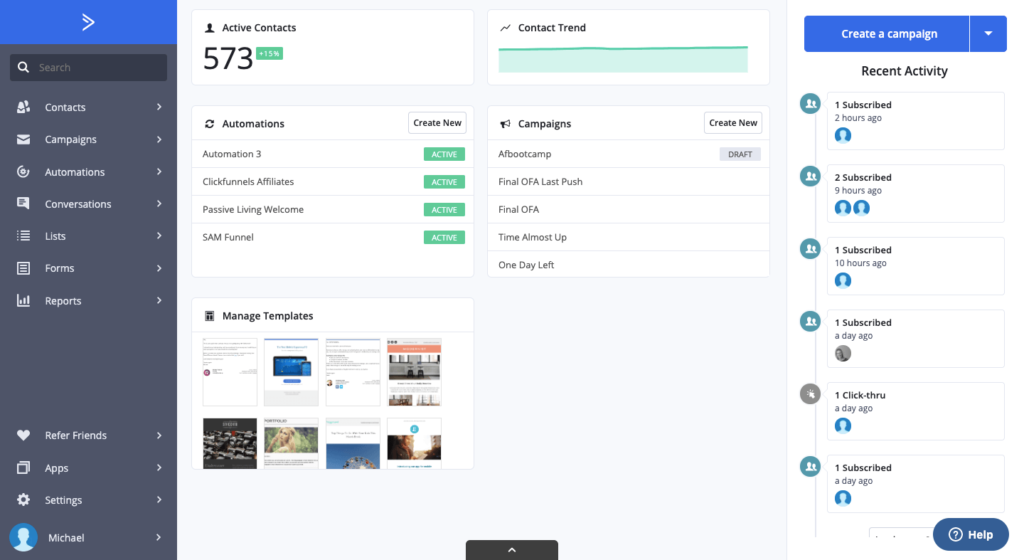
Key Differences:
- Mailchimp offers a variety of integrations but tends to focus on the basics, such as e-commerce platforms and social media.
- ActiveCampaign excels with deeper and more customizable integrations, particularly for CRM, sales, and webinar tools, making it ideal for businesses with complex needs.
Analytics and Reporting
When comparing ActiveCampaign vs Mailchimp, analytics and reporting are essential features for understanding the performance of your email campaigns. Both platforms offer reporting tools, but they differ in the level of detail, customization, and actionable insights they provide.
Mailchimp Analytics and Reporting:
Mailchimp offers basic analytics tools that are suitable for small businesses or those just starting with email marketing:
- Campaign Reports: Mailchimp provides standard reporting features like open rates, click rates, bounce rates, and unsubscribes, allowing you to get a quick overview of your campaign’s performance.
- Audience Insights: You can access general audience data, such as growth trends and demographic information, helping you understand who your subscribers are.
- Comparative Reporting: Mailchimp allows you to compare the performance of multiple campaigns, giving you a sense of which email types and strategies are working best.
- Limited Customization: While Mailchimp’s reports are easy to read, the customization options are limited. You can’t dive deeply into granular data or create highly tailored reports.

ActiveCampaign Analytics and Reporting:
ActiveCampaign provides advanced analytics and reporting features, designed for businesses that want to gain in-depth insights and optimize their marketing efforts:
- Advanced Reporting Dashboards: ActiveCampaign offers customizable dashboards, allowing you to track key metrics like campaign performance, automation workflows, and sales funnels in real-time.
- Email Engagement Reports: ActiveCampaign provides detailed reports on email engagement, including opens, clicks, forwards, and heatmaps, which help you understand how subscribers interact with your emails.
- Goal Tracking: With ActiveCampaign, you can track specific goals, such as sales conversions or lead generation targets, and see how well your campaigns are achieving them.
- A/B Testing Analytics: ActiveCampaign’s A/B testing reports go beyond basic subject line testing, allowing you to test email content, sending times, and audience segments for more targeted optimizations.
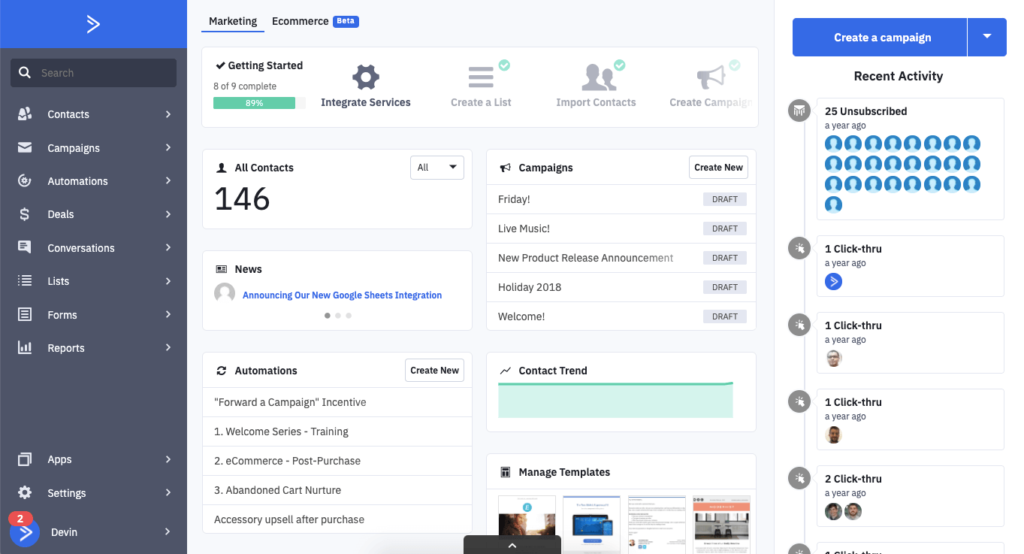
Key Differences:
- Mailchimp provides basic but easy-to-understand reporting features, ideal for users who want quick insights without the need for deep analysis.
- ActiveCampaign offers more detailed and customizable reports, giving users the ability to track advanced metrics, conduct A/B testing, and monitor goals, making it better suited for businesses that need to optimize and fine-tune their campaigns.
Deliverability
When comparing ActiveCampaign vs Mailchimp, deliverability is a critical factor in determining how successful your email campaigns will be. Deliverability refers to the likelihood that your emails will land in your recipients’ inboxes rather than being sent to their spam folders. Both platforms have strong reputations in this area, but there are notable differences between them.
Mailchimp Deliverability:
Mailchimp has a solid reputation for deliverability, thanks to its strong sender reputation and strict compliance with email marketing standards:
- High Sender Reputation: Mailchimp has a robust system in place to ensure emails are sent from reputable servers, which helps improve deliverability rates.
- Spam Filter Protection: Mailchimp takes steps to prevent emails from being flagged as spam by using industry-standard authentication techniques such as SPF (Sender Policy Framework) and DKIM (DomainKeys Identified Mail).
- Dedicated IPs: Mailchimp offers dedicated IP addresses for high-volume senders, which can improve deliverability by separating your sending reputation from others on shared IPs. However, this feature is available only on higher-tier plans.
- Monitoring and Feedback: Mailchimp provides basic feedback loops that help monitor the success of your emails. However, it lacks more advanced features for managing and optimizing deliverability.
ActiveCampaign Deliverability:
ActiveCampaign is well-regarded for its strong deliverability and focus on ensuring emails reach the inbox:
- Advanced Deliverability Tools: ActiveCampaign uses industry-standard authentication (SPF, DKIM, and DMARC) to improve inbox placement and prevent your emails from being flagged as spam.
- Dedicated IPs and IP Warming: For high-volume senders, ActiveCampaign provides dedicated IP addresses and an IP warming service. This gradually increases sending volume to build a good sender reputation over time, which helps improve long-term deliverability.
- Deliverability Monitoring: ActiveCampaign offers more advanced deliverability analytics, including real-time reports that track bounce rates, complaints, and inbox placement, allowing you to take immediate corrective action if needed.
- Personalized Deliverability Support: ActiveCampaign’s support team offers specialized assistance with deliverability issues, which can be invaluable for businesses looking to improve their email success rates.
Key Differences:
- Mailchimp provides basic tools for ensuring deliverability and a solid track record of inbox placement, but it lacks more advanced monitoring and support features.
- ActiveCampaign offers more comprehensive deliverability features, including IP warming, detailed analytics, and personalized support for businesses with more complex email marketing needs.
Recommendation:
If deliverability is a key concern and you need basic features for ensuring emails reach inboxes, Mailchimp is a reliable option. However, if you’re managing high-volume email campaigns or need more advanced tools to ensure the best possible inbox placement, ActiveCampaign provides a more robust set of deliverability features.
Pricing Plans
When comparing ActiveCampaign vs Mailchimp, pricing plans are an important consideration for businesses looking to get the most value for their money. Both platforms offer a range of pricing tiers, but the structure and value of those tiers vary based on features and user needs. Let’s break down the pricing models for each.
Mailchimp Pricing Plans:
Mailchimp offers a variety of pricing plans based on the number of subscribers you have and the features you need. Its pricing is fairly straightforward, but the higher tiers can become expensive as your list grows:
- Free Plan: The Free plan is ideal for beginners and small businesses with fewer than 500 subscribers. It offers basic email marketing features, including email campaigns, marketing automation, and basic reporting. However, it limits the number of emails you can send per month and restricts access to advanced features.
- Essentials Plan: Starting at $11/month, the Essentials plan includes more advanced features such as A/B testing, 24/7 email support, and more detailed reporting. It’s suitable for businesses looking to grow their email marketing efforts.
- Standard Plan: Priced from $17/month, the Standard plan includes all the features of Essentials, plus additional automation options, retargeting ads, and advanced audience insights. This plan is suitable for businesses that need more automation and deeper insights into campaign performance.
- Premium Plan: The Premium plan starts at $299/month and offers advanced features such as multivariate testing, advanced segmentation, and phone support. This plan is best for large businesses with complex needs and a high volume of subscribers.

ActiveCampaign Pricing Plans:
ActiveCampaign also offers a tiered pricing model based on your subscriber count and feature requirements. Its pricing is more flexible and includes more advanced automation and CRM tools at higher tiers:
- Lite Plan: Starting at $9/month, the Lite plan is perfect for small businesses and includes essential email marketing features like email campaigns, basic automation, and reporting. It’s a great option for businesses just getting started.
- Plus Plan: The Plus plan starts at $49/month and includes more advanced features such as CRM tools, sales automation, and personalized customer support. This plan is ideal for businesses that want to integrate marketing and sales workflows.
- Professional Plan: Starting at $129/month, the Professional plan adds advanced automation, predictive sending, and custom reporting. It’s suited for businesses that want to take their email marketing to the next level with deeper analytics and personalization.
- Enterprise Plan: The Enterprise plan is customized and starts at $229/month, offering advanced features such as a dedicated account manager, more customization options, and the ability to manage multiple brands. This plan is designed for large organizations with high-volume needs.

Key Differences:
- Mailchimp has a more straightforward pricing structure and offers a free plan that’s accessible for small businesses or beginners. However, its more advanced features are locked behind higher-tier plans, which can be expensive as your subscriber list grows.
- ActiveCampaign provides a more comprehensive set of features at the higher levels, particularly for businesses needing CRM, automation, and sales tools. While it starts at a lower price than Mailchimp for its Lite plan, its advanced features come at a higher price point.
Design and Templates
When comparing ActiveCampaign vs Mailchimp, the design and templates features are essential to creating visually appealing and effective email campaigns. Both platforms provide an array of templates and customization options, but there are notable differences in terms of ease of use, variety, and flexibility.
Mailchimp Design and Templates:
Mailchimp offers a wide selection of professionally designed templates, making it easy for users to create beautiful email campaigns with little effort:
- Template Variety: Mailchimp provides a large library of pre-designed templates for different industries, including e-commerce, real estate, and more. Whether you’re looking to send a promotional email or a newsletter, there’s a template for nearly every occasion.
- Drag-and-Drop Editor: The drag-and-drop editor is intuitive, making it easy to customize your templates. You can add images, text blocks, buttons, and other elements without needing any coding knowledge.
- Customizable Elements: Mailchimp’s templates are highly customizable. While the templates are pre-designed, you can adjust colors, fonts, layouts, and other elements to align with your branding.
- Limited Advanced Customization: Although Mailchimp’s editor is user-friendly, users who need deeper customization (such as advanced CSS or HTML modifications) may find it limited compared to other platforms.

ActiveCampaign Design and Templates:
ActiveCampaign also offers a solid selection of templates, but its focus on email automation and CRM integration makes its design features particularly powerful for businesses looking for highly personalized email campaigns:
- Template Variety: ActiveCampaign provides a smaller selection of templates compared to Mailchimp, but the templates are designed with customization and automation in mind. Whether you’re creating a welcome email, a follow-up series, or a sales promotion, ActiveCampaign offers templates suited to various use cases.
- Advanced Customization: ActiveCampaign’s email editor allows for more flexibility in customizing the design, including HTML/CSS editing. This is ideal for users who want to fine-tune their email designs beyond basic drag-and-drop functionality.
- Smart Content Blocks: ActiveCampaign’s templates are optimized for automation, allowing you to personalize emails based on user behavior, preferences, and other data. This makes it an excellent choice for businesses that want to send highly targeted, dynamic content.
- Mobile Optimization: Like Mailchimp, ActiveCampaign ensures that all templates are mobile-responsive. However, its focus on automation means that designs are especially tailored for a range of customer interactions, increasing their effectiveness on mobile devices.

Key Differences:
- Mailchimp provides a larger variety of pre-designed templates and a simple, intuitive editor, making it ideal for users who want quick and easy designs with a professional look.
- ActiveCampaign offers more advanced customization options, particularly useful for businesses that require greater control over their email designs or those looking to incorporate personalized, dynamic content into their campaigns.
👉 Image suggestion: Add a side-by-side comparison image showing a typical Mailchimp template next to an ActiveCampaign template to highlight the design differences.
Customer Support
When comparing ActiveCampaign vs Mailchimp, customer support is an essential factor to consider, especially when you encounter issues that require quick resolution. Both platforms offer various support options, but the quality, availability, and range of resources vary. Let’s dive into what each platform offers in terms of customer support.
Mailchimp Customer Support:
Mailchimp provides a comprehensive set of customer support options, but the level of support varies depending on your plan:
- Free Plan Support: For users on the Free plan, Mailchimp offers limited support. You’ll only have access to email support and a limited knowledge base. This can be a challenge if you’re facing a critical issue and need immediate assistance.
- Essentials and Higher Plans Support: Users on paid plans (Essentials, Standard, and Premium) receive access to 24/7 email support and live chat. However, phone support is only available on the Premium plan.
- Knowledge Base and Help Center: Mailchimp has an extensive knowledge base, filled with articles, tutorials, and guides to help you solve common issues on your own. They also offer video tutorials and user forums, making it easy to find solutions to common questions.
- Limited Personalized Support: Although Mailchimp’s customer support is generally responsive, users on lower-tier plans may not receive as personalized assistance as those on higher-tier plans, which can be a drawback for businesses needing more hands-on help.
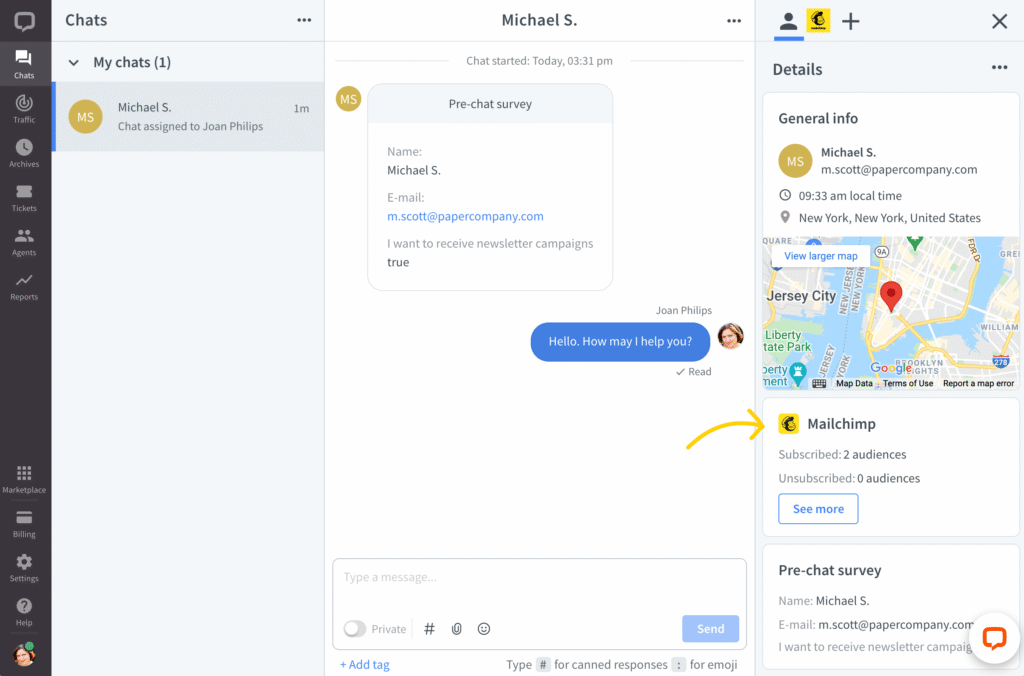
ActiveCampaign Customer Support:
ActiveCampaign offers robust customer support, particularly for users on higher-tier plans, with a variety of channels available to assist users in resolving issues quickly:
- Email and Live Chat Support: ActiveCampaign offers email and live chat support across all plans, with response times generally being quick. The live chat support is available during business hours and is highly praised for being knowledgeable and helpful.
- Phone Support: Phone support is available for users on Plus, Professional, and Enterprise plans. This can be a crucial benefit for businesses that need immediate and detailed assistance with technical issues.
- Knowledge Base and Help Center: ActiveCampaign provides an in-depth knowledge base, with articles, videos, and detailed guides to help users solve problems independently. They also have a community forum where users can ask questions and share tips.
- Personalized Onboarding and Account Management: ActiveCampaign offers personalized onboarding for users on higher-tier plans, which can help businesses get up and running smoothly. Enterprise users also receive dedicated account managers who provide strategic guidance and support.
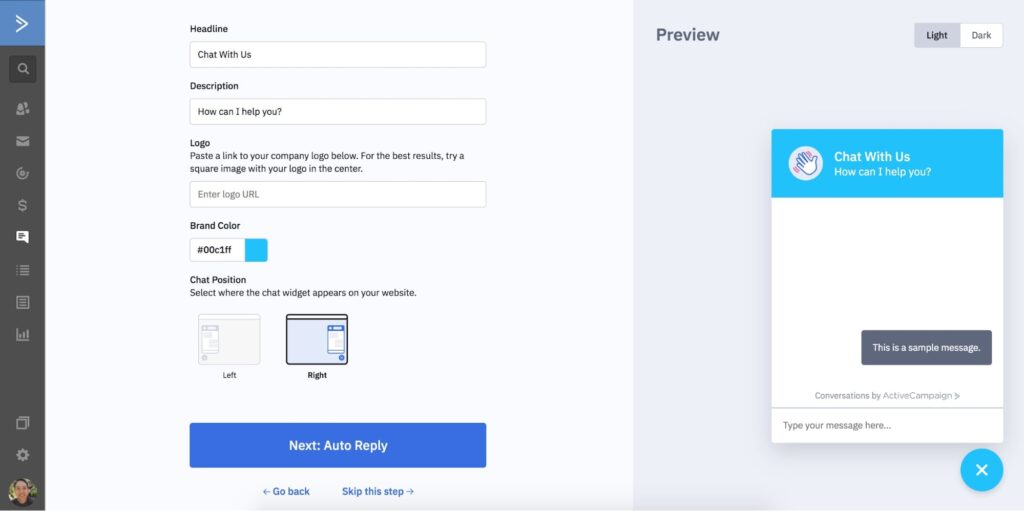
Key Differences:
- Mailchimp offers solid support, but personalized assistance is mostly reserved for higher-tier plans. The Free plan has limited access to support, which might be a drawback for smaller businesses or those just starting.
- ActiveCampaign provides more extensive support options across all plans, including email, live chat, and phone support for higher-tier users. Its focus on personalized support, especially with onboarding and account management for paid plans, is a key benefit for users who need more hands-on assistance.
Ease of Migration
When comparing ActiveCampaign vs Mailchimp, ease of migration is an important consideration, especially if you’re transitioning from another email marketing platform. Migrating your email list, automation workflows, and campaign data can be a complex task, so it’s essential to choose a platform that offers straightforward tools and support. Let’s look at how each platform handles the migration process.
Mailchimp Ease of Migration:
Mailchimp offers several options to make the migration process as smooth as possible, but the ease of migration depends on your current platform and the complexity of your campaigns:
- Importing Contacts: Mailchimp provides easy tools for importing contacts via CSV files or integrations with other platforms like Shopify, WordPress, and Salesforce. You can also import from other email marketing platforms, including AWeber and Constant Contact, using built-in integrations.
- Migrating Campaigns and Templates: While Mailchimp makes it easy to import contacts, migrating existing campaigns or templates from another platform can be more challenging. There isn’t an automated tool for migrating email designs, so you may need to manually recreate templates and campaigns.
- Automation Workflows: Migrating automation workflows from another platform is not as seamless. You will likely need to set up new automations from scratch, as Mailchimp does not offer direct migration of workflows.
- Support for Migration: Mailchimp’s support team can assist with migration questions, but there’s no dedicated migration service unless you’re on higher-tier plans. Users migrating from another platform may need to rely on the knowledge base for guidance.
ActiveCampaign Ease of Migration:
ActiveCampaign provides a more robust set of tools to help users migrate from other email marketing platforms, especially for users with more complex needs:
- Importing Contacts: ActiveCampaign makes importing contacts straightforward with support for CSV uploads, integrations with popular platforms like Shopify, WooCommerce, and WordPress, and even direct import from other email platforms. The system automatically maps fields, simplifying the process.
- Migrating Campaigns and Templates: ActiveCampaign does not offer a direct one-click migration tool for campaigns or templates. However, it provides a comprehensive knowledge base and resources to guide users through manually transferring email templates and campaign designs.
- Automation Workflows: One of the biggest advantages of ActiveCampaign is its focus on automation. The platform provides tools to easily migrate automation workflows from other platforms, particularly if you’re moving from a system like ConvertKit or Mailchimp. ActiveCampaign also offers a migration checklist for smoother transitions.
- Migration Assistance: ActiveCampaign’s customer support can assist with migration, and higher-tier users receive personalized onboarding to help with the transition. This makes the process easier for businesses looking to move their email marketing efforts to ActiveCampaign without losing important data or automation.
Key Differences:
- Mailchimp offers relatively simple tools for importing contacts and integrations with other platforms but lacks an easy way to migrate campaign templates and workflows. This can be a hurdle if you’re moving from another platform with complex campaigns.
- ActiveCampaign provides a more comprehensive migration process, especially for users with automation workflows and complex email marketing needs. It offers tools for importing contacts, and while templates and automations don’t migrate automatically, the platform’s resources and support make the process easier.
Use Cases & Target Audience
When evaluating ActiveCampaign vs Mailchimp, it’s important to understand which platform is best suited for different types of businesses and their specific needs. Both platforms serve a broad range of industries, but they each have particular strengths that make them more suitable for certain use cases and target audiences.
Mailchimp Use Cases and Target Audience:
Mailchimp is a versatile email marketing platform that is ideal for small businesses, startups, and individuals who are just getting started with email marketing. Its intuitive design and user-friendly features make it accessible for a wide range of users.
- Small Businesses and Startups: Mailchimp is perfect for small businesses looking for an affordable and easy-to-use email marketing solution. Its Free plan allows businesses to get started without a financial commitment, making it attractive to startups with limited budgets.
- Content Creators and Bloggers: Many content creators and bloggers use Mailchimp to grow their audience and send newsletters. The platform’s template library and straightforward email campaign creation process make it an excellent choice for users who need to send regular updates to their subscribers.
- E-commerce Stores: Mailchimp also integrates well with e-commerce platforms like Shopify, WooCommerce, and BigCommerce, making it ideal for small e-commerce businesses. Users can automate product recommendations, abandoned cart emails, and promotional offers.
ActiveCampaign Use Cases and Target Audience:
ActiveCampaign is best suited for businesses that need advanced email marketing features, particularly those looking to scale their marketing efforts and leverage automation. Its rich feature set makes it suitable for businesses with more complex needs, such as automation, CRM, and customer segmentation.
- Mid-Sized to Large Businesses: ActiveCampaign is ideal for mid-sized and large businesses that require robust marketing automation, CRM capabilities, and customer segmentation. Its powerful automation tools make it suitable for businesses looking to streamline marketing workflows and enhance customer experiences.
- B2B Companies: ActiveCampaign excels in providing a strong CRM and contact management system, making it a good fit for B2B businesses that need to manage relationships and track sales pipelines. The platform’s automation allows B2B companies to nurture leads and automate follow-ups, saving time and effort.
- E-commerce and SaaS Businesses: ActiveCampaign offers extensive e-commerce automation tools and integrations with platforms like Shopify, WooCommerce, and Magento. Additionally, SaaS companies use ActiveCampaign to manage customer journeys, send onboarding emails, and create upsell campaigns.
Key Differences:
- Mailchimp is ideal for small businesses, bloggers, and e-commerce stores that are just getting started with email marketing or need a simple solution. Its easy-to-use features and low entry cost make it a great choice for those with limited experience.
- ActiveCampaign is tailored for businesses that require more sophisticated automation, CRM, and lead nurturing capabilities. It is particularly well-suited for mid-sized to large businesses, B2B companies, and e-commerce or SaaS businesses with complex marketing needs.
Compliance & Security
When evaluating ActiveCampaign vs Mailchimp, compliance and security are two critical aspects to consider, especially if you’re handling sensitive customer data or operating in regulated industries. Both platforms offer robust security measures and are compliant with major regulations, but there are some differences in how each platform addresses these areas. Let’s take a closer look at their compliance features and security practices.
Mailchimp Compliance & Security:
Mailchimp is committed to ensuring its users’ data is secure and compliant with global regulations. Here are the key compliance features Mailchimp offers:
- GDPR Compliance: Mailchimp is fully compliant with the General Data Protection Regulation (GDPR), which is a key regulation for businesses operating in the European Union. The platform provides tools to help users collect consent from subscribers, manage data privacy, and comply with GDPR’s strict requirements.
- CAN-SPAM Act Compliance: Mailchimp follows the CAN-SPAM Act, which regulates email marketing practices in the United States. This means users must include an unsubscribe option in their emails and adhere to specific content guidelines.
- Data Encryption and Security: Mailchimp uses encryption to protect user data and implements SSL (Secure Socket Layer) certificates to ensure secure communication. The platform also has two-factor authentication (2FA) to help users protect their accounts.
- Security Certifications: Mailchimp is SOC 2 Type II compliant, which means it meets high standards of security and confidentiality. It also undergoes regular security audits to ensure the platform is secure.
ActiveCampaign Compliance & Security:
ActiveCampaign also prioritizes compliance and security, especially for businesses in regulated industries. Here’s what makes ActiveCampaign stand out in this area:
- GDPR Compliance: ActiveCampaign is fully compliant with GDPR and offers users the necessary tools to manage data privacy, such as the ability to obtain consent and manage customer data preferences. They provide a detailed data processing agreement (DPA) for businesses that require one.
- CCPA Compliance: ActiveCampaign complies with the California Consumer Privacy Act (CCPA), which provides consumers in California with the right to request access to their personal data or request its deletion.
- CAN-SPAM Act Compliance: ActiveCampaign also adheres to the CAN-SPAM Act and includes all necessary features to help users comply, such as unsubscribe options, opt-in requirements, and accurate sender information.
- Data Encryption and Security: ActiveCampaign employs SSL encryption, two-factor authentication (2FA), and advanced firewalls to protect user data. They also conduct regular security audits to ensure that data is always secure.
- Advanced Security Measures: ActiveCampaign offers additional security features for users on higher-tier plans, including custom user permissions, secure data storage, and monitoring systems to protect against breaches.
Key Differences:
- Both Mailchimp and ActiveCampaign are compliant with major regulations like GDPR and CAN-SPAM and offer encryption and two-factor authentication for security.
- ActiveCampaign has an edge for businesses that require additional compliance measures like CCPA (California Consumer Privacy Act) compliance and more advanced security features, especially for larger enterprises or businesses in regulated industries.
- Mailchimp is suitable for small businesses and startups that need basic compliance and security features but may not require the extensive, enterprise-level protections that ActiveCampaign offers.
Conclusion
When choosing between ActiveCampaign vs Mailchimp, the right platform for your business depends largely on your specific needs and goals. Both platforms are highly respected in the email marketing industry and offer a range of features to help you grow your business, but they cater to different user types.
- Mailchimp is a fantastic choice for small businesses, startups, content creators, and anyone looking for a simple, user-friendly platform with an easy entry point. Its affordable pricing plans, straightforward tools, and solid compliance features make it ideal for those just starting with email marketing or who need basic automation and marketing functionalities.
- ActiveCampaign, on the other hand, is more suited for businesses with more advanced marketing needs. Whether you’re a mid-sized company, a B2B business, or an e-commerce store, ActiveCampaign provides robust automation, CRM capabilities, and advanced segmentation features that can help you scale your marketing efforts. Its advanced compliance and security measures also make it a great choice for businesses operating in regulated industries.
Ultimately, the decision between ActiveCampaign vs Mailchimp comes down to your business size, goals, and the complexity of your marketing strategy. If you need a straightforward, cost-effective solution for email marketing, Mailchimp will serve you well. However, if you’re looking for deeper marketing automation and a more comprehensive suite of tools to manage customer relationships, ActiveCampaign is the better option.
Take the time to assess your current needs and growth plans, and choose the platform that best aligns with your business objectives. Regardless of your choice, both platforms offer powerful features to help you build meaningful relationships with your audience and drive business success.
If you want to know about ActiveCampaign vs HubSpot Then read it also. Thankyou
These are items I use and love. If you take action (i.e. make a purchase) after clicking one of the affiliate links, I will earn some coffee money, which I promise to drink while continuing to support your journey. You do not pay a higher price.


